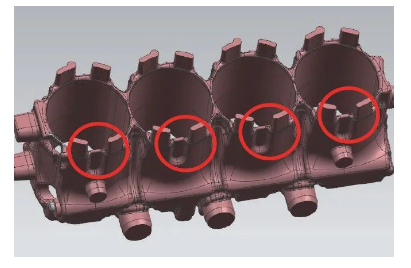pushbutton simplicity in establishment, maintenance and speed
Among the key reasons to opt for rapid casting over any other method for prototyping in automotive is the significant elimination of turnaround time. Making a single prototype normally takes weeks using traditional methods, whereas Rapid casting takes just a few days. In certain cases, a common rapid casting project can go from idea to final prototype in less than a week. This quick production cycle also means that automotive companies can speed up the research and development process, testing, and time to market, which is essential in a fast and competitive industry.
High Precision and Quality
Repeatable Precision: Fast casting processes are extremely accurate with tolerances typically in the range of ±0.005 inches. A level of precision so critically important for automotive part precision in both fit and function in large multi-part assemblies.
High Material Properties: Rapid casting enables the application of end-use materials that possess properties closely similar to materials manufactured through traditional methodologies. This ensures that prototypes are directly to scale and shape, and also to mechanical and thermal properties — an ideal container for performance tests as well as range tests.

Low-Volume Production: Are You Being Cost-Effective?
Another benefit of quick casting for automotive rapid prototypes is the cost savings in low-volume production. Traditionally, this process is quite expensive and takes a lot of time to set up and tool whereas in rapid casting, the molds that are being cast can instead be made from less expensive materials such as silicone. Using this technique helps to slash up front costs, and thereby allows small runs of parts to be made for testing without havimg to commit to majority production expenditures.
Design Iteration Flexibility
Fast Design Changes: Allows for fast iterations of design with minimal financial consequences due to rapid casting. Design adjustments can be incorporated in the digital model and a new mold can be fast produced in the event that the prototype shows alterations. Automotive engineers now could perform tests as part of a development program and rapidly iterate their designs in response to real world testing data.
Integration with High-tech
Fast casting also works well with things like 3D scanning and CAD models, making it capable of producing very high detail components at equal costs of cheaper molded counterparts. These digital tools provide the ability to create an exact replica of a design, and with that, to even pre-test modifications without spending precious time or resources on physical rework.
Encourage Sustainable Practices
Rapid casting also offers characteristics that are increasingly important in a sustainability -focused industry including material waste reduction. Conventional casting can result in substantial wastage, while rapid casting exactly applies materials to generate the prototype, which decreases the surplus. This also reduces the environmental impact and results in materials costing less.
Final Thoughts
There are also essential strategic advantages to be gained by choosing rapid casting for automotive prototype development. It maximizes speed, accuracy, cost effectiveness and flexibility, important factors to keep a cutting edge position in the fast paced world of automotive. Car manufacturers can become more innovative and efficient by incorporating quick casting in the prototype development process.